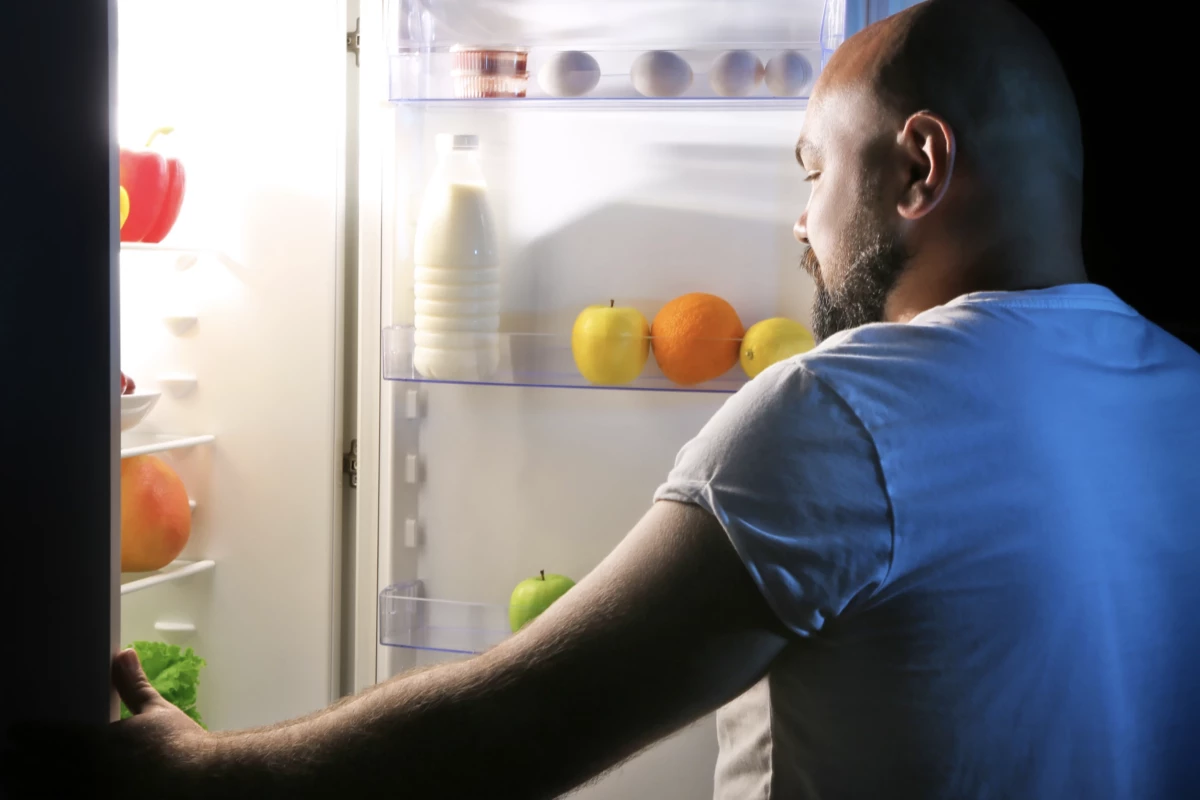A new study has made the case for synching your daily calories with your own circadian rhythm to improve glucose metabolism, protecting against type 2 diabetes and obesity. Until now, the relationship between energy intake and the internal biological clock, in relation to metabolic function, hasn't been well understood or studied.
Scientists at the Deutsches Zentrum fuer Diabetesforschung (DZD), or the German Center for Diabetes Research, set out to explore how the timing of eating in relation to one's internal circadian clock affects insulin sensitivity – a marker of metabolic health – and whether these eating patterns are influenced by genetics. To do so, 46 sets of twins, both identical and fraternal, had their sleep and movement tracked with actigraphy devices (to measure sleep and activity) for 14 days, and during with they kept a five-day weighed food diary that noted exact time of all meals and snacks, portion sizes and types of food.
Through this, a caloric midpoint (time of day when 50% of daily calories were consumed) and a circadian caloric midpoint (CCM) (how that time lined up with their biological clock) was detailed for each participant. Additionally, detailed glucose tests assessed insulin resistance and sensitivity.
"Although the contribution of the circadian clock to metabolic regulation is widely recognized, the role of eating timing in glucose metabolism and diabetes risk remains insufficiently studied," said DZD researcher Olga Ramich, who also heads the Department of Molecular Metabolism and Precision Nutrition at the German Institute of Human Nutrition Potsdam-Rehbrücke (DIfE).
Sleep determined the CCM – your ideal biological clock energy intake window – so, if for example you averaged eight hours of sleep between 11 pm and 7 am, the sleep midpoint would be 3 am, which marks the "start" of your day. On that sleep schedule, your ideal CCM would be around 11 am to 1 pm, based on circadian alignment and metabolic health. At this point in the day, you'd want to have consumed 50% of your energy intake. If your energy intake was higher in the evening, you'd be considered a "late eater," consuming most of your calories further away from your biological morning.
Of course, two people could eat the exact same meals at 6 pm, but if one has a much earlier chronotype, they are biologically eating later than the other.
Earlier studies have shown evidence of increased metabolic dysfunction triggered by late-night eating, but those studies have focused more on generalized morning, day and night time.
The participants' sleep helped scientists assess that ideal energy midpoint, which enabled the researchers to see if people who were "late eaters" – even if dinner time wasn't "late" by a standard clock – had compromised metabolic measures. And by comparing identical twins (who share all their genes) with fraternal twins (who share roughly half), the researchers could estimate how much of eating behavior and circadian alignment is genetically driven. And they found that both eating timing and chronotype (biological sleep-wake rhythm) were partly shaped by genetics.
Overall, identical twins tended to have more similar eating times and chronotypes than fraternal twins, showing moderate heritability.
Looking further into the results, and adjusting for age, sex, sleep duration and total energy intake, the researchers found that late circadian eating – eating a majority of your calories a few hours beyond your CCM – resulted in worse insulin sensitivity (lower ISI Stumvoll, higher HOMA-IR and higher fasting insulin levels) than those who ate closer to their window of time relative to their body clock. The late eaters also had, on average, a higher body mass index (BMI) and larger waist circumference – both markers of obesity.
“People who ate their main calories earlier in the day had better insulin sensitivity,” said Ramich. “On the other hand, subjects who consumed their main calories late in the day showed poorer insulin sensitivity, which is associated with a higher risk of type 2 diabetes.”
The researchers noted that there are many external factors – family, work, time and food access – that govern what and when we eat. But using your personal biological clock as a guide could be more beneficial than purely observing time on a watch face. And, unlike fasting, you don't need to eat all of your calories within a strict time frame, just shape your energy intake towards your biological clock's "morning." For many, it places more emphasis on consuming most of your energy through breakfast and lunch.
To work out your own chronotype, you can log your sleep for a few weeks (taking particular note of days you wake naturally), take The Munich Chronotype Questionnaire (MCTQ) or track sleep with a wearable. Or simply work out your sleep and wake time if you had no work or social obligations. From here, you can determine your CCM – and how aligning meals with your internal rhythm may benefit both your metabolic health and energy levels.
“However, as eating times are partly hereditary, some people may find it difficult to change their habits,” Ramich added. “Further validation studies and clinical trials are needed to better understand the effectiveness of mealtime-based interventions.”
The study was published in The Lancet journal eBioMedicine.





